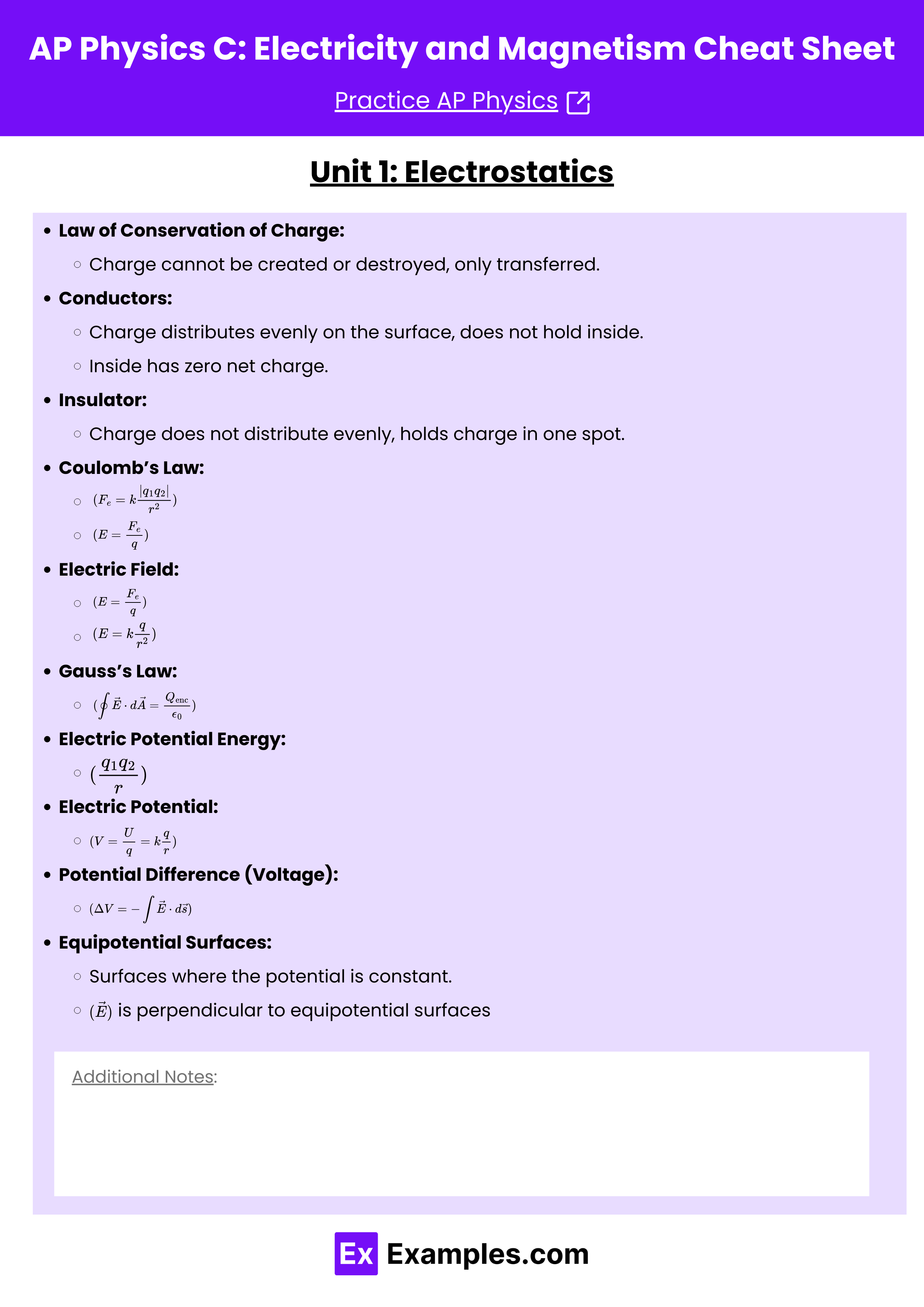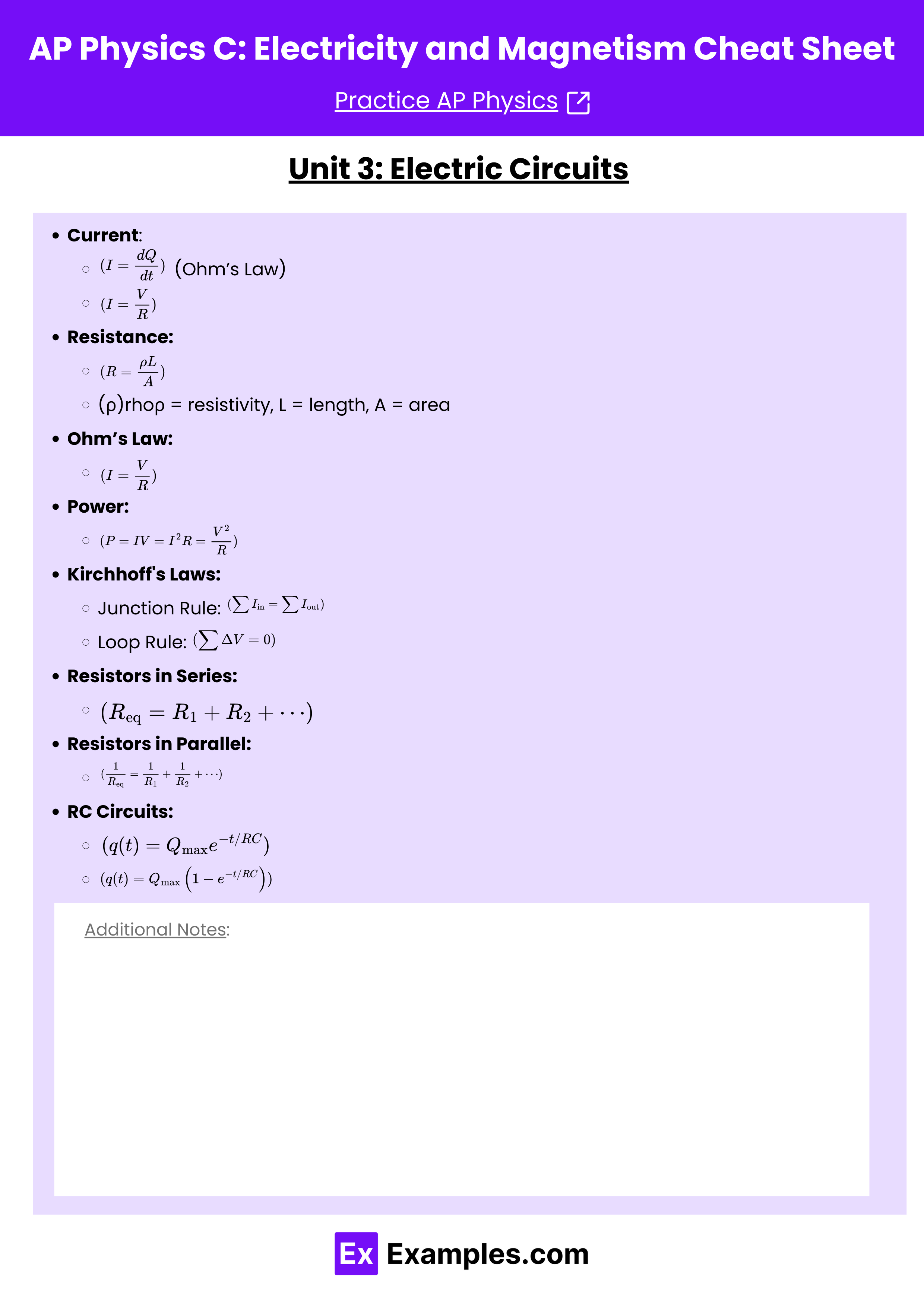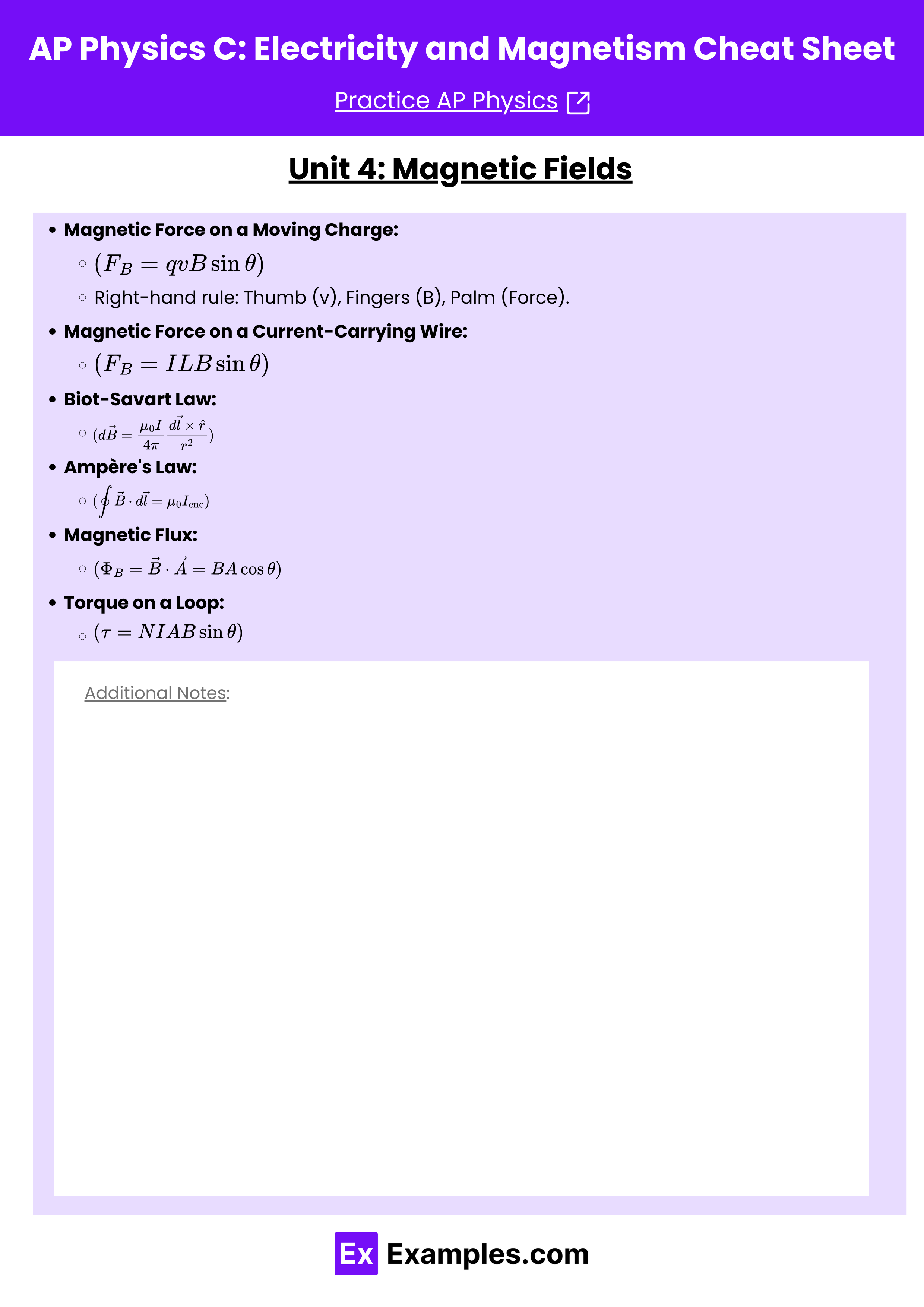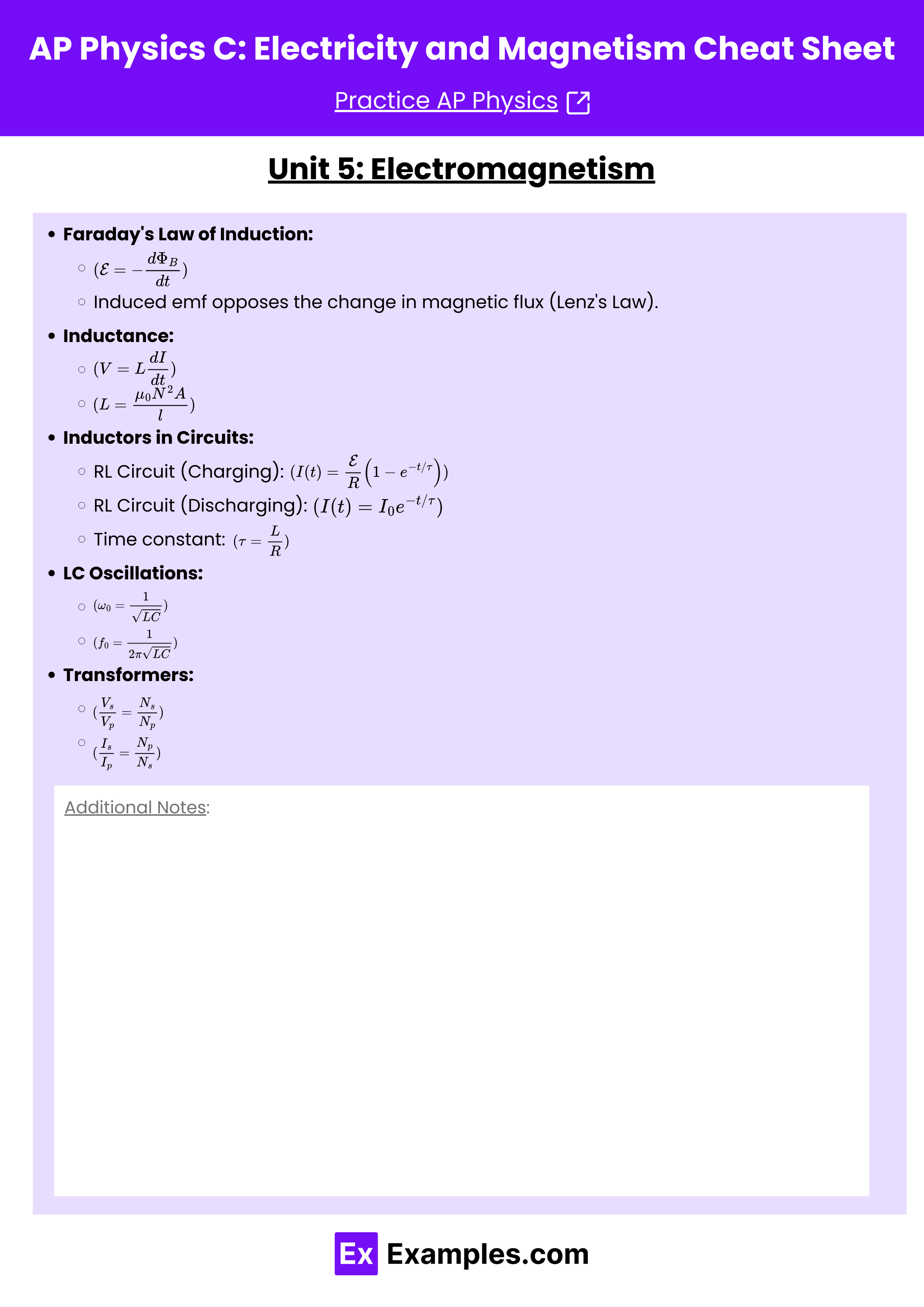Master the essential concepts of AP Physics C: Electricity and Magnetism with this comprehensive cheat sheet, covering key formulas, laws, and circuit principles.
Free AP Physics C: Electricity and Magnetism Practice Test





Download AP Physics C Electricity and Magnetism Cheat Sheet – Pdf
Unit 1: Electrostatics
Law of Conservation of Charge:
Charge cannot be created or destroyed, only transferred.
Conductors:
Charge distributes evenly on the surface, does not hold inside.
Inside has zero net charge.
Insulator:
Charge does not distribute evenly, holds charge in one spot.
Coulomb's Law:
Positive : repel, Negative : attract
Electric Field:
for a point charge.
Gauss’s Law:
Electric Potential Energy:
Electric Potential:
Potential Difference (Voltage):
Equipotential Surfaces:
Surfaces where the potential is constant, is perpendicular to equipotential surfaces.
Unit 2: Conductors, Capacitors, & Dielectrics
Capacitance:
Units: Farads (F)
Parallel Plate Capacitor:
Capacitors in Series:
Capacitors in Parallel:
Energy Stored in Capacitor:
Dielectrics:
Increases capacitance by a factor K: C′=KC
Electric Field in Dielectrics:
Capacitance with Dielectric:
Unit 3: Electric Circuits
Current:
(Ohm’s Law)
Resistance:
= resistivity, L = length, A = area
Ohm’s Law:
V = IR
Power:
Kirchhoff's Laws:
Junction Rule:
Loop Rule:
Resistors in Series:
Resistors in Parallel:
RC Circuits:
Charging:
Discharging:
Unit 4: Magnetic Fields
Magnetic Force on a Moving Charge:
Right-hand rule: Thumb (v), Fingers (B), Palm (Force).
Magnetic Force on a Current-Carrying Wire:
Biot-Savart Law:
Ampère's Law:
Magnetic Flux:
Torque on a Loop:
Unit 5: Electromagnetism
Faraday's Law of Induction:
Induced emf opposes the change in magnetic flux (Lenz's Law).
Inductance:
Inductors in Circuits:
RL Circuit (Charging):
RL Circuit (Discharging):
Time constant
LC Oscillations:
Transformers:
FRQ Tips
Show Your Work: Detailed steps can earn partial credit.
Use Units Consistently: Always include units in your calculations and final answers.
Apply Right-Hand Rules: Essential for magnetic force and field direction.
Label Diagrams: Clearly label all forces, fields, and relevant quantities.
Think Symmetrically: Use symmetry in charge distributions and fields to simplify problems.

